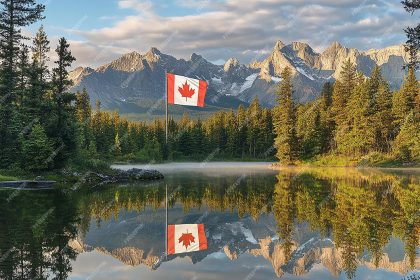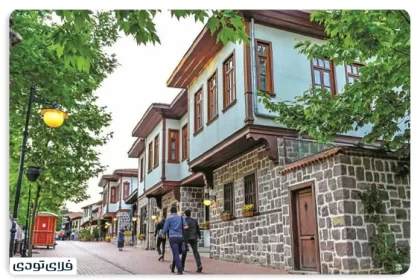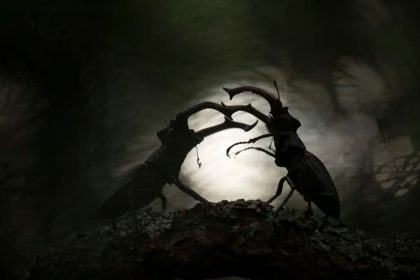If you are traveling to Japan for the first time, prepare yourself to face the most different country in the world. Japan is a country of interesting and exciting surprises. From incredible beliefs and customs to exotic foods, everyone has joined hands to make the most different trip of your life. In addition to customs, Japan’s tourist attractions are unique in their own way. The unique combination of tradition and modernity are intermingled in all the temples and buildings of Japan and have presented an astonishing image. In the following article, we will introduce the most popular attractions in Japan.
Tokyo Imperial Palace
Visiting the palaces and residences of kings has always been fascinating for those interested in history and tradition. The royal palaces of each country are built according to the original culture and architecture of that country, and this has made them a valuable tourist attraction. The Tokyo Imperial Palace is also known as a symbol of preserving traditions in Japan with its beautiful and original architecture. But perhaps the thing that makes Tokyo Imperial Palace a different place than other palaces is the presence of the king and the royal family in this palace.
As one of the most famous tourist attractions in Japan, the Tokyo Imperial Palace is located among very large gardens that are beautifully decorated. The Japanese royal family since 1993 They decided to open the palace to the public. Visitors can visit the eastern part of the palace, which includes the gardens, as well as the Royal Museum for free. The grounds of the palace are decorated with colorful azalea and hydrangea flowers, and they are so beautiful and eye-catching that they make all the visitors disappear and fascinated.
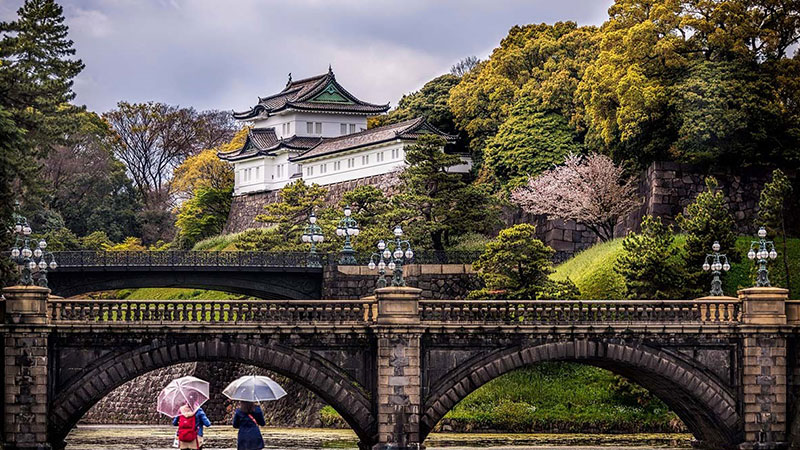
The interior architecture of the palace is also very attractive and extraordinary like its surroundings. But in general, visitors are not allowed to enter the buildings inside. Of course in days 2 January to mark the beginning of the new year and 23 This rule is broken in December to coincide with the king’s birthday, and visitors can take a guided tour of the palace’s attractions and meet the royal family on the balcony..
Visit information From the Imperial Palace of Japan
- The Imperial Palace East Gardens are open to the public.
- April to August: from 9 am to 4:30 pm
- September to March: from 9 am to 4 pm
- Last entry is usually 30 minutes before closing.
- Entrance fee: Entrance to the Eastern Garden is free.
- The Eastern Garden is closed on Mondays and Fridays.
- It is also not possible to visit during the New Year holidays (usually from December 29 to January 3).
Palace visit tour
- The main part of the palace is not open to the public, tours are organized under the supervision of the Imperial Palace Agency.
- Visitors can register through online booking or in person.
- Tours are conducted in Japanese, but English audio guides are available.
Location and accessibility of Tokyo Imperial Palace
As one of the main tourist attractions in Japan, the Imperial Palace is located in the center of Tokyo and near Tokyo Station.
Easy access by subway: Otemachi or Takebashi stations are the closest stations to the palace.
Important points of visiting the palace
- Photography is restricted in some areas.
On special days such as January 2 (for the New Year) and February 23 (the Emperor’s birthday), parts of the palace are opened to the public and it is possible to see the Emperor.
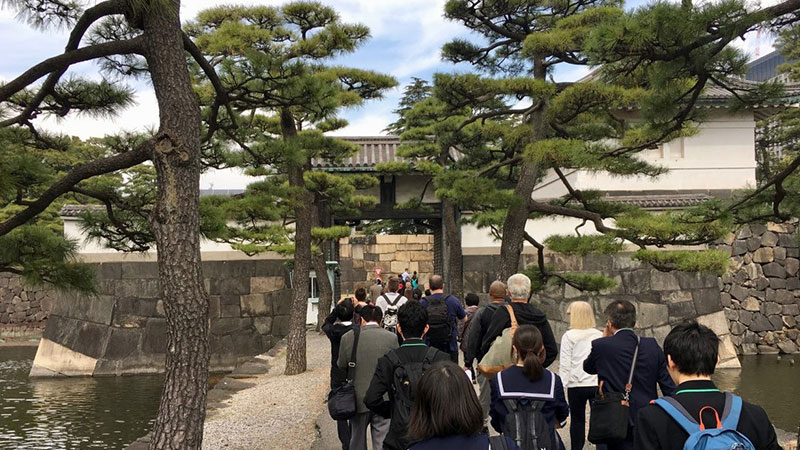
Read more: The most famous sightseeing places in Kobe, Japan
Himeji Castle is one of the oldest tourist attractions in Japan
If you want to take a trip through the fascinating history of Japan, you must visit Himeji Castle in Japan. This centuries-old castle with its strange and amazing architecture will take you on a long journey. Himeji Castle, as one of the most beautiful tourist attractions in Japan, is located at the highest point of Himeji, Japan. This castle has an area of 107 hectares and consists of 82 separate buildings, each of which has its own unique architecture.
Himji Castle was built in 1333 with stone and wood as a strong defensive structure. Many families fought for the possession of Himeji, but in the end, the Tadasumi family took possession of it. This family spent many years beautifying and restoring the castle. The creativity and artistry used in the design of Himeji has made it one of the largest, most famous and most attractive historical castles and attractions in Japan..
Of course, the very beautiful cherry trees around the castle, which have a different and eye-catching effect in every season of the year, have made the scenery around Himeji look as extraordinary and amazing as the castle itself.
Himeji Palace visit information
From 9:00 a.m. to 5:00 p.m. (last entry until 4:00 p.m.).
In the summer season (mid-April to mid-August), working hours are extended until 6:00 PM.
The palace is normally open and rarely closed (may be closed only in case of emergency).
Normal ticket: 1000 yen (for adults).
Combined ticket: including entrance to the palace and Koko-en Garden at the price of 1050 yen.
Entry is free for children under 6 years old.
How to access
- From Himeji Station (JR or Sanyo lines):
- Walking: about 15 to 20 minutes.
- Taxi or bus: about 5 minutes.
- The walking path to the palace is very beautiful and you will enjoy the main street with the view of the palace.
Good time to visit
The best time to visit Himeji Castle is in spring (especially during the cherry blossoms) and autumn, but the castle has its own beauty in every season.
Guide to visiting Himeji Castle
- English brochures and guides are provided at the entrance of the palace. Guided tours are also available by appointment.
- There are restrooms and souvenir shops in the area.
- You can take photos freely in the outer parts of the palace, but there may be restrictions in some inner areas.
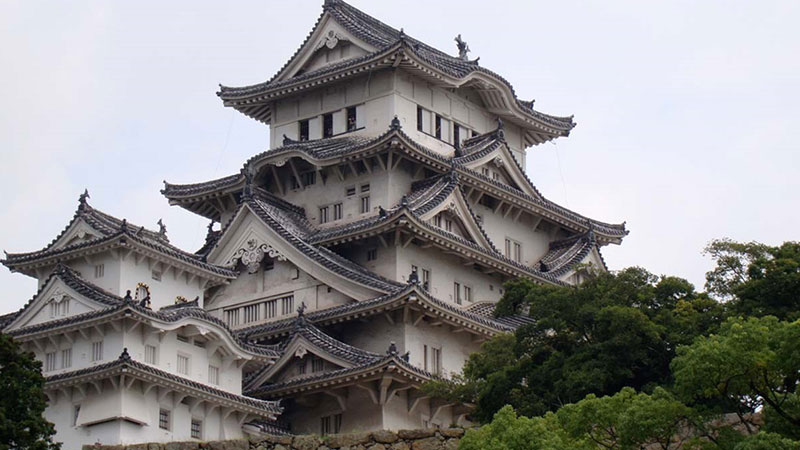
The city of Osaka is one of the most spectacular tourist attractions in Japan
Paradise for noodle lovers, wonderful weather, wonderful nature, water canals, unique historical temples and modern city facilities. All of them have made Osaka an ideal and different destination for Japanese tourists.
The city of Osaka is located next to Awaji Island on one side and on the other side next to Kei Island and the Dronboom Sea. Being surrounded by water has made Osaka connected with other places through urban canals, and this has made the city known as the Venice of the East.
The date of the formation of Osaka coincides with the beginning of the Japanese Empire. For this reason, there are many historical castles and temples in this city that show the grandeur of this city to tourists. In addition, Osaka, as one of the most spectacular tourist attractions in Japan, has been the main place of rice and food trade in Japan in the past. More than that Japanese chefs displayed their cooking skills in this city and gradually turned Osaka into the kitchen of Japan until today the most luxurious and best restaurants in Japan are operating in this city..
Osaka has also made remarkable progress in the field of technology. The existence of art galleries, Japan World Studio, Shitonji Hall and Kobeport and Tsutenkaku Towers has made Osaka one of the most modern and advanced cities in Japan.
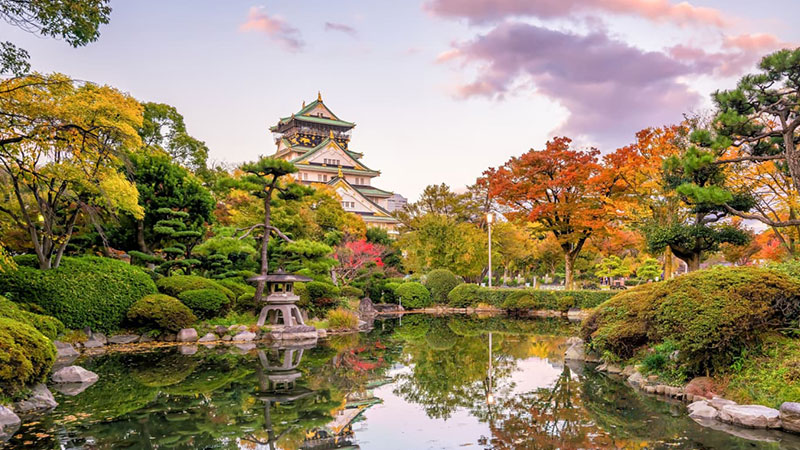
Best time to visit
- Spring (March to May): This time is very popular because of the cherry blossoms.
- Autumn (September to November): with mild weather and beautiful scenery of colorful leaves.
- Summer is also associated with lively festivals, but the weather can be hot and humid.
Osaka’s top tourist attractions
- Osaka Castle: One of the symbols of the city and the most important attractions in Japan.
- Dotonbori District: A lively area with restaurants, cafes, and shops.
- Osaka Aquarium (Kaiyukan): one of the largest aquariums in the world.
- Universal Studios Japan: an amusement park with the theme of Hollywood movies, suitable for families.
- Tsutenkaku Tower: a famous tower in Shinsei district with a beautiful view of the city.
- Shitennoji Temple: One of the oldest temples in Japan, built in the 6th century.
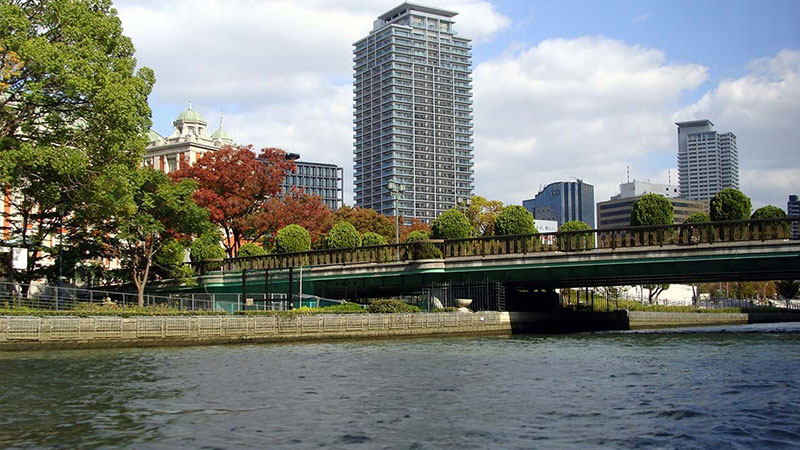
Read more: What are the most famous festivals in Japan?
Golden Temple (Kin Katoji) One of the most beautiful tourist attractions in Japan
Kin Katoji Golden Temple is located in Kyoto, Japan. This beautiful temple is a remnant of the Kitayama culture, or aristocratic circles in Japan, and displays a different style of Japanese architecture. Kitayama is built on 3 floors. The first floor has a completely different structure and is made of wooden columns and plaster walls. The second floor of this huge building is covered with a layer of gold and there are statues of several kings inside. The third and most important floor of the temple is gilded inside and outside. The architectural style of this part of the building matches the Chinese Zen architecture, and finally a large phoenix stands out on the roof made of gold.
As one of the most beautiful tourist attractions in Japan, Kinkatoji Temple is located in the middle of a very beautiful marsh, which allows visitors to enjoy walking in nature and observing the scenery after seeing the building.
AInformation about visiting the Golden Temple
- Location: Kyoto City, Kita-ku Ward, Rokuon-ji Park
- Visiting hours: every day from 9 am to 5 pm
- Entrance fee: about 500 to 600 yen (may change slightly depending on the season)
Suggested time to visit
1 to 2 hours for a complete tour
The best time to visit the Golden Temple
Autumn (due to the beauty of the autumn leaves around the temple) or winter (when the snow sits on the golden roof of the temple).
Important points of visiting the Golden Palace
- Photography of the exterior of the temple is free, but entry inside the main building is not allowed.
- In the temple grounds, there is a beautiful garden and walking paths that inspire a sense of peace.
- Cafes and souvenir shops are available for visitors near the temple.
- It is better to visit in the early morning or at the end of the day to avoid crowds of tourists.
How to access
- From Kyoto Station, you can take public buses to Kinkaku-ji-michi Station, which takes about 40 minutes.
- If you use a taxi, the journey will take about 20 minutes.
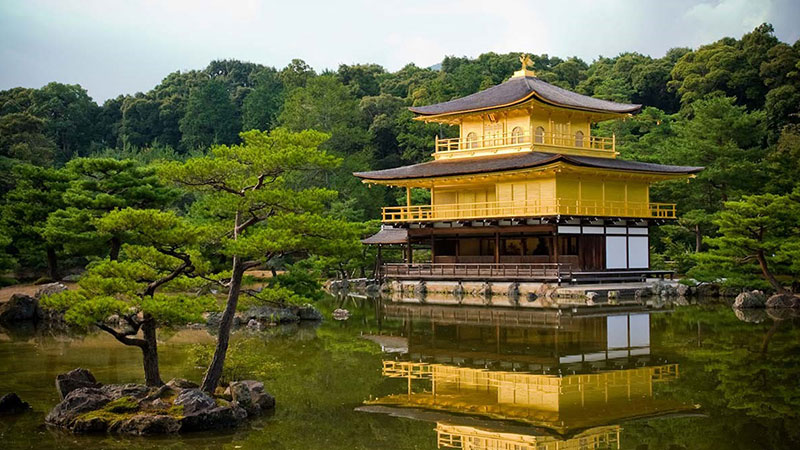
Read more: Full introduction of 30 of the most spectacular temples in Japan
Tokyo Skytree Tower One of the most modern tourist attractions in Japan
Ridge Skytree in Tokyo is the tallest tower in the world after Burj Al Khaifah in Dubai and is considered a symbol of the world of modernity in Japan. This tower is 634 meters high, on the lower floors of the tower there is a very large and modern shopping center with an equipped aquarium. Skytree also has two terraces that provide visitors with a 360-degree view of the city of Tokyo. The first terrace is called the Tembo platform and is located at an altitude of 350 meters. A French restaurant and souvenir shops are located here.
The second platform is located at the height of 450 meters of the tower. This terrace has a very attractive spiral path that leads visitors to the top of the platform. The facade around the terrace is made of glass and steel. Viewers can also watch the farthest view of Tokyo city from this angle.
The Skytree Tower was opened in 2012 and currently, as one of Japan’s attractions, a large number of tourists visit it daily for photography and recreational and business facilities.
Visiting hours of the Skytree Tower
- Normal hours: 9:00 am to 9:00 pm (last admission: 8:00 pm)
- Visiting hours may change during holidays or special occasions.
The cost of entrance tickets
- The first observation platform (Tembo Deck – 350 meters high):
- Ticket price: approximately 2100 yen to 3000 yen (depending on the time and type of ticket)
- The second observation platform (Tembo Galleria – 450 meters high):
- Additional ticket for this floor: 1000 yen to 1500 yen (in addition to the first floor ticket)
How to access
- Tokyo Skytree Station (Tokyo Skytree Line)
- Oshiage Station (Hanzomon or Toi Asanakusa Line)
- Skytree Tower is well connected to the main stations of the city.
Sky Tree Tower facilities
- Upscale restaurants and cafes
- Souvenir shops and local products
- Sumida Aquarium and Tokyo Solamachi shopping center at the foot of the tower
Tips for visiting the tower
- The best time to visit is in the evening at dusk or at night, as Tokyo’s illuminated landscape is spectacular.
- Queues may be long during holidays and peak tourist seasons.
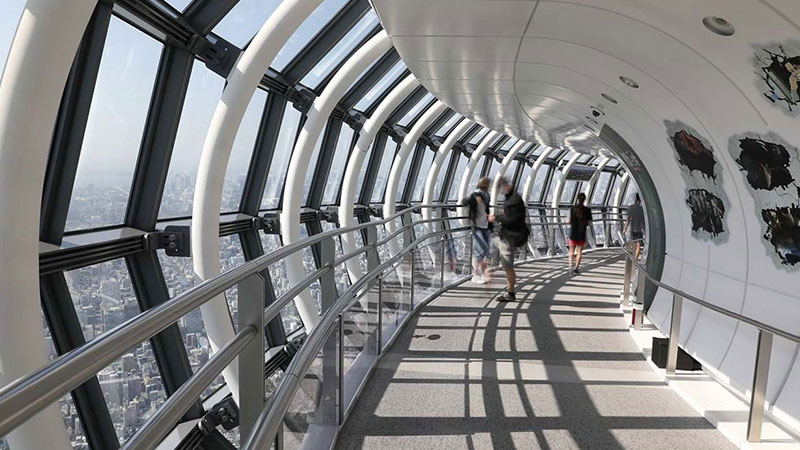
Todai-ji Temple is one of the most legendary tourist attractions in Japan
If you love mysterious and legendary places, Todaiji Temple will take you to the world of Buddha legends with its different atmosphere. This amazing temple is located in the city of Nara and is one of the seven powerful temples and one of the tourist attractions of Japan.
Todaiji Temple dates back to the 8th century AD, the largest wooden hall in the world has been built inside the temple, and this wooden hall has one of the largest Yrenzi Buddha statues in its heart. The pillars built in Todaiji are also very extraordinary, but the most amazing of them is the pillar that has a hole the size of Buddha’s nose, the Japanese believe that passing through this hole will bring good luck.
Todaiji Temple is located in the middle of a large and beautiful garden covered with special trees and flowers. There are also many deer living around the temple, which are sacred to the Japanese people, because they believe that these deer are angels that protect the temple.
Visiting hours From Tudaiji Temple
- April to October: 7:30 am to 5:30 pm
- November to March: 8:00 AM to 5:00 PM
Entry fee
- Adults: 600 yen
- High school and middle school students: 400 yen
- Children: 300 yen
Todaiji temple address
- Nara City, Nara Park, Todaiji Temple.
- The temple is located near Nara Park, where you can also see the beautiful Nara deer.
How to reach the temple
- By train: From JR Nara or Kintetsu Nara station, you can reach the temple by walking or taking a bus for about 20 minutes.
- By bus: Local bus lines have access to the station near the temple (Todaiji Station).
Important points of visiting Todaiji Temple
- When visiting a temple, pay attention to the rituals of respect in religious places.
- Autumn (November) and spring (March and April) are the best time to visit because of the beauty of cherry blossoms and autumn leaves.
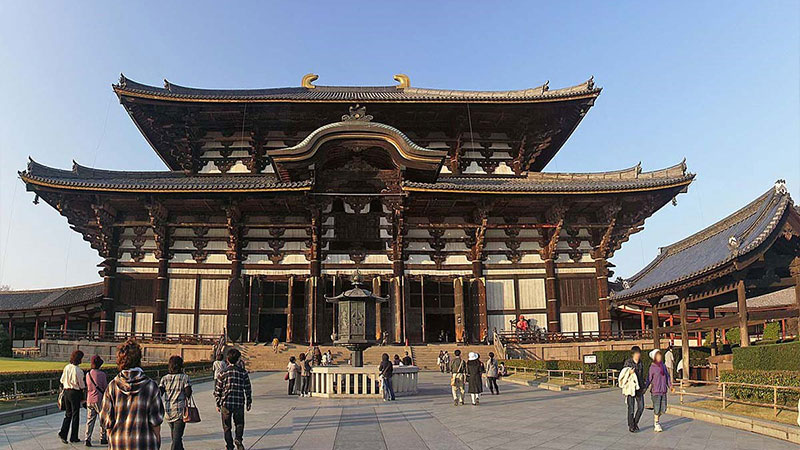
Nagoya city From the sights of Japan
Nagoya is one of the most beautiful ports in Japan, which has many historical and natural attractions in its heart. Due to its excellent location, this port has become a trade center for ceramic and textile industries in Japan. In addition, the existence of various entertainment centers and temples and historical monuments has made Nagoya popular among tourists.
Nagoya Port is one of the popular and crowded tourist spots in Nagoya. There is also a large collection of fish and native marine creatures kept in an aquarium. In addition, the presence of historical ships and the maritime museum has multiplied the attractiveness of the port for visitors.
Nagoya’s unique castle, Atsuta Temple, Meiji Historical Village, and the City Art Museum are among the other attractions of Nagoya Port and among Japan’s tourist attractions.
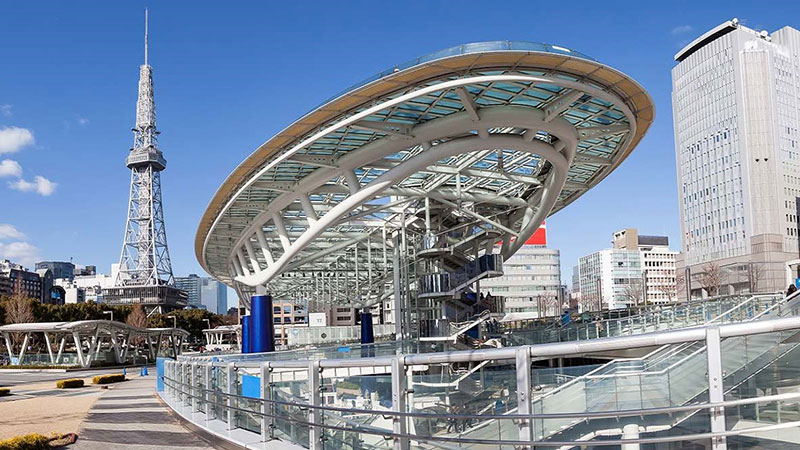
Important tourist attractions of Nagoya
- Nagoya Castle: a historical castle dating back to the 17th century, famous for its traditional architecture and golden Shichihoku sculptures.
- Nagoya Port Aquarium: One of the best aquariums in Japan with displays of dolphins, whales and various marine species.
- Atsuta Shrine: A temple with an age of more than 1900 years that houses one of the three sacred treasures of Japan.
- Nagoya Science Museum: A modern museum with interactive exhibits and a large sky dome.
- Osaka area (Osu): shopping center and historic street with various shops and street food.
Best time to visit Nagoya
- Spring (March to May): For cherry blossoms and mild weather.
- Autumn (September to November): To see autumn leaves and cool and pleasant weather.
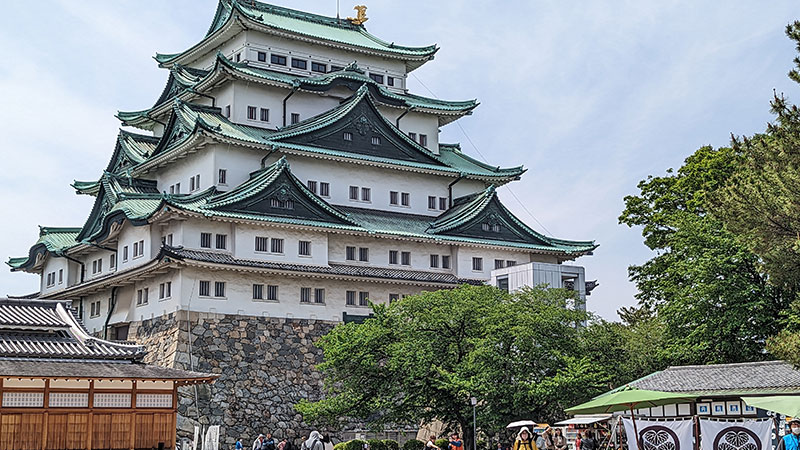
Fushimi Inari Taisha Temple
Orange pillars ending in an endless forest create a unique temple in Kyoto. As one of the most famous tourist attractions in Japan, Inari Fushimi is a temple built for the god of abundance and blessings. The peace, beauty and spiritual atmosphere of the temple will enchant your soul.
Fushimi Temple is a place of worship that followers of the ancient Shinto religion built to worship their god “Inari” on top of the high hills of Kyoto. This temple is located at a height of 233 meters above the sea level and to reach it, you have to go through an amazing 2 km road with wonderful views. But the most famous passage of the temple is the orange columns, which are also known as the symbol of the temple.
The interior of Inari Fushimi Temple consists of several small shrines. At the entrance to the temple, there are many statues of the god Inari, most of the statues are made in the form of male and female, which are a symbol of abundance in nature.
Visiting hours of the temple
- The temple is open 24 hours a day and you can visit it at any time of the day or night.
- Administrative offices and souvenir and lucky charm sales centers are usually active from 8 am to 6 pm.
- Visiting fee: Visiting the temple is free.
Access to the temple
- By train: From Kyoto Station, take the JR Nara Line and get off at Inari Station. This journey takes about 5 minutes. Inari Station is right next to the temple entrance.
- By Subway: Take the Keihan Line to Fushimi-Inari Station. From there, you can walk for about 10 minutes to the temple.
Best time to visit
- Early morning or evening near sunset is recommended to avoid crowds and experience a quieter atmosphere.
- In spring (cherry blossom time) and autumn (beautiful autumn colors), this temple offers stunning views.
Tips for visiting Inari Fushimi Temple
- The walking path consists of several levels; If you want to go to the top of the mountain, you need about 2-3 hours.
- Be sure to wear comfortable shoes and bring water with you.
- This temple also has a special beauty at night, because some parts are beautifully illuminated
- Fushimi Inaru is one of the most popular temples in Japan, which hosts more than 30,000 tourists from all over the world every year with its unique architecture.
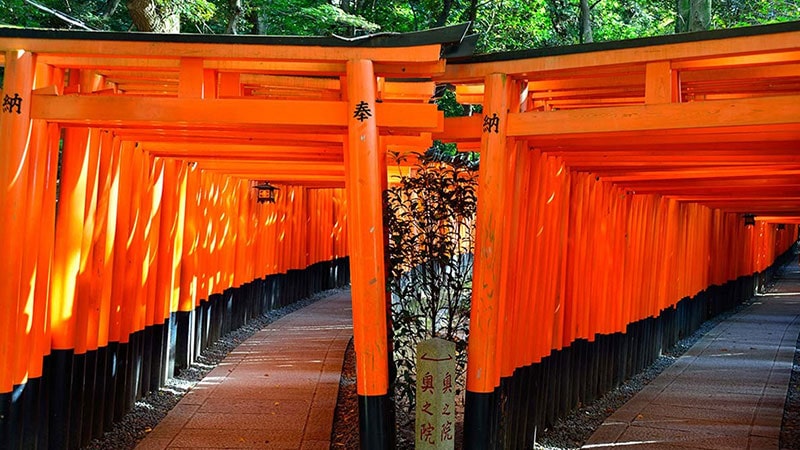
Asakusa and Senso-ji Temple are one of the most famous tourist attractions in Japan
Senso-ji Temple is one of the oldest and most famous temples in Japan, located in the Asakusa district of Tokyo. This Buddhist temple is dedicated to the goddess of mercy, Kannon, and is more than 1400 years old.
The history of the construction of Sensoji Temple as one of the most famous tourist attractions in Japan dates back to 628 AD. According to legend, two fishermen found a statue of the goddess Kannon in the Sumida River and decided to place it in this temple as a spiritual symbol.
Visiting hours of Sensoji Temple
- Sensoji Temple is generally open to visitors 24 hours a day. However, the main hours for visiting the halls and different parts of the temple are usually from 6:00 AM to 5:00 PM.
- Museum and other parts: Museums related to the temple and specific parts may have different hours and it is better to check the exact hours before visiting these places.
Entry fee
- Visiting Sensoji Temple is free. You can easily enter the temple and its courtyards.
- Museum and exhibitions: If you plan to visit temple-related museums and exhibits, there is usually an entrance fee that varies depending on the type of exhibit.
Audrey and how to access
- Address: Temple address: 2-3-1 Asakusa, Taito Ward, Tokyo, Japan.
- By subway: The stations closest to Sensoji Temple are:
Asakusa Station is accessible by Tobu Skytree Line, Ginza Line and Asakusa Line.
- Walking: Once you arrive at Asakusa Station, it’s only a few minutes’ walk to the temple.
Useful tips for visiting Sensoji Temple
- Omikuji (fortune telling): You can get fortune telling at the temple where predictions are made for your future.
- Souvenirs and food: On Nakamise Street, which runs from Kamenarimon Gate to the temple, you can buy traditional souvenirs and local Japanese food.
- Clothing: It is recommended to wear appropriate and comfortable clothing to visit the temple as you may need to do a lot of walking.
- Visiting Sensoji Temple is a spiritual and cultural experience that gives you an opportunity to learn about the history and culture of Japan.
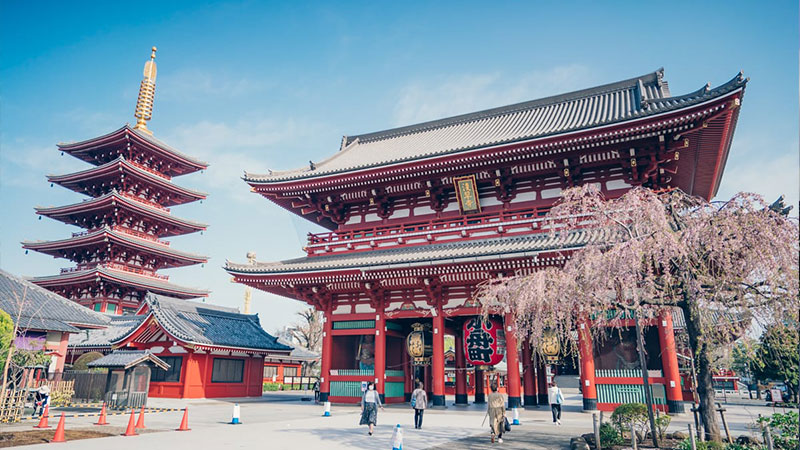
Nara Park
Nara Park is one of Japan’s most famous tourist attractions in Nara city. Located in the center of the city, this park covers an area of about 522 hectares and is one of the largest public parks in Japan. Nara Park is known for the presence of hundreds of free deer that live there. These deer are a symbol of the city of Nara and are among the sacred creatures in Shinto culture.
Deer in Nara Park are used to humans and many tourists try to feed and interact with them. Despite being free in the park, these deer are officially listed as protected species.
Visiting information of Nara Park
- Visiting hours: Nara Park is publicly available to visitors and is accessible 24 hours a day. But most of the main attractions such as temples and museums have special visiting hours, which are usually from 9:00 am to 5:00 pm. It is suggested to check the visiting hours of certain sites before going to them.
- Entry fee
Entering Nara Park and exploring its natural environment is free.
Todai-ji Temple has an entrance fee.
Kasuga Taisha also usually charges a fee to visit its special buildings.
Museums around the park may have an entrance fee.
How to get to Nara Park
- By train: Nara is easily accessible from Osaka and Kyoto. Nara train station is located near the park (about 15 minutes walk).
- By bus: Public bus lines also go to the park from various stations in Nara.
- By car: The park has parking lots that can be used to park cars.
Good time to visit
The best time to visit Nara Park is spring and autumn. In the spring, the cherry blossoms in this park are very beautiful, and in the fall, the colorful autumn leaves create a wonderful sight. In summer, the heat can be oppressive and in winter it can be cold, but the natural beauty of the park still attracts attention.
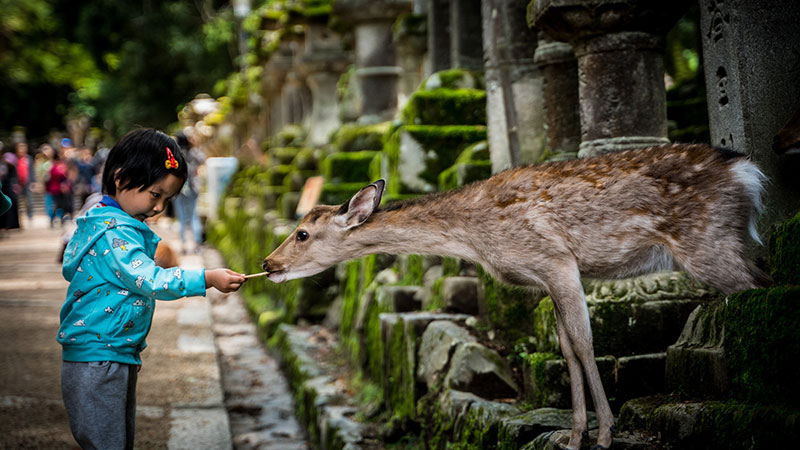
Kyoto area
Kyoto is one of the most important historical and cultural cities in Japan, located in the center of Honshu Island. This city is known as the former capital of Japan during the imperial period (794 to 1868), and many of Japan’s cultural and historical heritages have been preserved in it.
Kyoto is famous for its Buddhist temples, Shinto temples, Japanese gardens, palaces and traditional houses. This city has more than 1,600 Buddhist temples, 400 Shinto temples, and many other historical monuments.
Good time to visit
- Spring and autumn are the best times to visit Kyoto. In spring, the cherry blossoms (sakura) are beautiful in the parks and temples of this city. In autumn, autumn colors in forests and temples have a special effect.
- The summer season is very hot, but you can enjoy local festivals and events during this time.
- Winter with cold and snow may not appeal to some, but the natural beauty and tranquility of the city is special in this season.
Important points for visiting Kyoto
- Observance of customs is important. For example, in temples and religious places, you should wear appropriate clothes and avoid loud noises and chaotic behavior.
- Before traveling, it is better to know the working hours of temples and attractions as well as the weather conditions.
- Visiting Kyoto is a unique experience that introduces you to the history, culture and natural beauty of Japan.
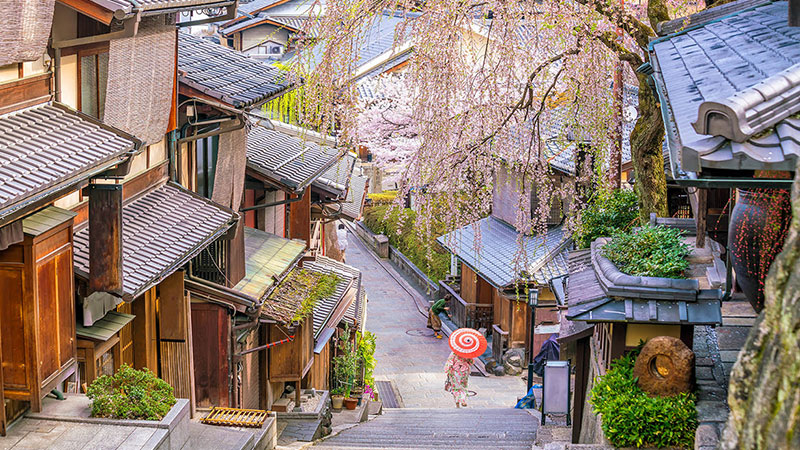
The most important tourist attractions in Japan at a glance
Here is a table of the most important tourist attractions in Japan:
The name of the tourist attraction | position | Description |
Kinkakuji Temple | Kyoto | The famous golden temple with special architecture |
Tokyo Tower | Tokyo | TV tower that has a beautiful view of the city of Tokyo |
Mount Fuji Yamagata | Shizuka | Japan’s tallest mountain and an outstanding natural attraction |
Satsuka Temple | J. Kyoto | A historical temple registered as a UNESCO World Heritage Site |
Nihon Park | Ashi Hakone | A natural area with hot springs, lake and mountain views |
Senso-ji Temple | Tokyo | One of the oldest Buddhist temples in Japan |
Tsukiji market | Tokyo | One of the largest fish and seafood markets in the world |
Himeji Castle | Himji | One of the most famous castles in Japan, registered as a UNESCO World Heritage Site |
Shinju Garden | that Kyoto | A beautiful Japanese garden with traditional architecture |
Osaka area | Osaka | Japan’s famous shopping and entertainment center |
final word
Japan is a country with a rich culture and ancient history, full of tourist attractions that showcase a combination of tradition and modernity. If you are planning to travel to this country, we suggest that you plan in such a way that you can visit natural, historical and cultural attractions.
Copying of the contents of Setare Vanak Airline Agency is prohibited only by mentioning the source.
RCO NEWS











